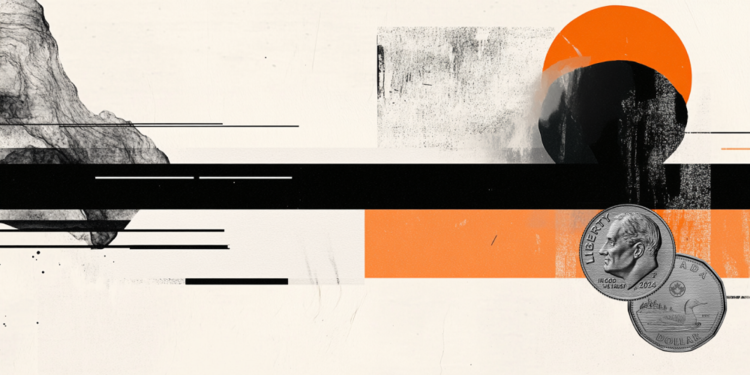- The Canadian Dollar caught an early decline on Friday, but Greenback declines are squaring Loonie positioning.
- Canada shed jobs in July after the pace of hiring declined faster than expected.
- Coming up next week: US CPI inflation figures to dominate market sentiment early.
The Canadian Dollar (CAD) stumbled on Friday, falling against the US Dollar (USD) before broad-market Greenback sentiment overtook Loonie positioning to chip away at the USD’s late-week strength. Canadian jobs data came in far below expectations, kicking the legs out from beneath Loonie bulls before general market sentiment continued forcing the US Dollar lower and giving the CAD a mulligan on souring jobs data.
Meaningful Canadian economic data is functionally absent from the economic release calendar next week, leaving global Greenback positioning in the driver’s seat once again. Another interest rate cut at the Bank of Canada’s (BoC) next interest rate decision is now a foregone conclusion as job creation dries up, but Monday’s upcoming US Consumer Price Index (CPI) inflation data will be the key datapoint next week and could throw a very large wrench into markets that are hoping for a continued easing in inflation pressures.
Daily digest market movers: Canadian Dollar moves in either direction remain temporary
- The Canadian Dollar tumbled before recovering ground on Friday, keeping USD/CAD hobbled near 1.3750.
- Canada lost 40.8K net jobs in July, shattering expectations of a thinner slowdown and taking a large chunk out of the previous month’s 83.1K upswing.
- A sharp contraction in net Canadian jobs has pinned expectations of another rate cut at the BoC’s next rate call on September 17.
- The BoC’s upcoming interest rate decision will be entirely eclipsed by the Federal Reserve (Fed), which makes its next interest rate decision on the same day.
- Key US CPI inflation data is due next week, and will draw plenty of attention as investors hope that inflation progress will slowly grind ahead.
Canadian Dollar price forecast
After some back-and-forth with the US Dollar, the Canadian Dollar is poised to end the week close to where it started. USD/CAD is now hamstrung along the 50-day Exponential Moving Average (EMA) near 1.3745, with further technical support baked in at the 1.3700 handle. CAD gained a scant 0.26% against the US Dollar this week, but meaningful bullish momentum behind the Loonie remains absent.
USD/CAD daily chart
Canadian Dollar FAQs
The key factors driving the Canadian Dollar (CAD) are the level of interest rates set by the Bank of Canada (BoC), the price of Oil, Canada’s largest export, the health of its economy, inflation and the Trade Balance, which is the difference between the value of Canada’s exports versus its imports. Other factors include market sentiment – whether investors are taking on more risky assets (risk-on) or seeking safe-havens (risk-off) – with risk-on being CAD-positive. As its largest trading partner, the health of the US economy is also a key factor influencing the Canadian Dollar.
The Bank of Canada (BoC) has a significant influence on the Canadian Dollar by setting the level of interest rates that banks can lend to one another. This influences the level of interest rates for everyone. The main goal of the BoC is to maintain inflation at 1-3% by adjusting interest rates up or down. Relatively higher interest rates tend to be positive for the CAD. The Bank of Canada can also use quantitative easing and tightening to influence credit conditions, with the former CAD-negative and the latter CAD-positive.
The price of Oil is a key factor impacting the value of the Canadian Dollar. Petroleum is Canada’s biggest export, so Oil price tends to have an immediate impact on the CAD value. Generally, if Oil price rises CAD also goes up, as aggregate demand for the currency increases. The opposite is the case if the price of Oil falls. Higher Oil prices also tend to result in a greater likelihood of a positive Trade Balance, which is also supportive of the CAD.
While inflation had always traditionally been thought of as a negative factor for a currency since it lowers the value of money, the opposite has actually been the case in modern times with the relaxation of cross-border capital controls. Higher inflation tends to lead central banks to put up interest rates which attracts more capital inflows from global investors seeking a lucrative place to keep their money. This increases demand for the local currency, which in Canada’s case is the Canadian Dollar.
Macroeconomic data releases gauge the health of the economy and can have an impact on the Canadian Dollar. Indicators such as GDP, Manufacturing and Services PMIs, employment, and consumer sentiment surveys can all influence the direction of the CAD. A strong economy is good for the Canadian Dollar. Not only does it attract more foreign investment but it may encourage the Bank of Canada to put up interest rates, leading to a stronger currency. If economic data is weak, however, the CAD is likely to fall.
Read the full article here


